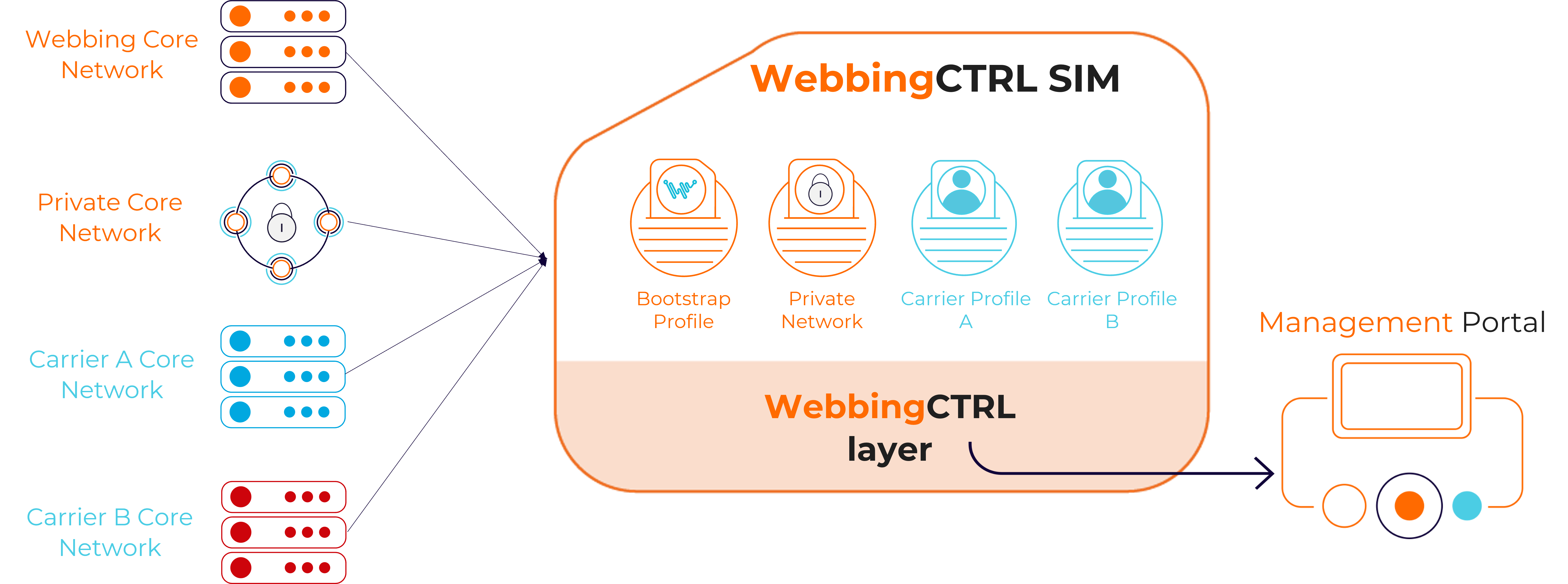by Baruch Pinto
The future looks bright for private networks. Industry experts and analysts are unanimously optimistic about their adoption and growth in various verticals. At the end of 2023, there were 2,900 private LTE/5G networks across the world, including trial and pilot deployments. Analysts forecast that by 2028, the number of private LTE/5G network deployments would reach 11,900. The number of devices that use them is growing rapidly as well: from 1.4 million IoT devices connected to private LTE/5G networks at the end of 2023, it is expected to grow to 7.1 million by 2028.
Private networks emerged as a means to overcome the challenges that existed in wireless connectivity. They provide connectivity wherever fixed, Wi-Fi or public networks can fall short in terms of coverage, throughput, latency or security. Today, there are hundreds of use cases for private networks across all verticals, be it a seaport, a windfarm or an oilfield with no cellular coverage, a huge sports or concert venue where thousands of visitors using their phones don’t leave enough bandwidth for broadcasting or other critical applications.
But while private networks were built to get over the hurdles in wireless connectivity, they are not without certain challenges themselves. There are several things that may be challenging for enterprises rolling out and operating private cellular networks.

Roaming on public networks
Initially, private networks were deployed to connect devices in discrete locations. Today, they are still isolated from the outside world in terms of networking, but they may cover some areas in the middle of a big city. In many use cases, it is important that devices remain connected both when they are using a private network (e.g. when they are on a production site) and when they roam on public networks (for example, when they travel between the sites where private networks are deployed). In 2021, Omdia estimated that 70% of private networks required the ability to roam onto Public Mobile networks nationally and internationally. There are also devices that may use public networks as a backup if their connection with the private network is lost.
The task may seem easy, as there are public networks available virtually everywhere nowadays and many connectivity providers that offer their services for various use case scenarios. Technically though, it can be quite complicated. To ensure sufficient coverage and continuous end-to-end connectivity, enterprises may need to contract with multiple mobile operators in every region where they deploy their private networks or plan their connected devices to travel.
It can get more complex for enterprises that have more than one private network. Moreover, for use cases like mobile asset tracking or mission-critical applications it is essential to make the transition between public and private networks as seamless as can be.
Connectivity management
Managing connected devices can be another challenge, especially when they switch between private and public networks. While closed private networks provide enterprises with full control over their communications infrastructure, operations, traffic and performance, it may be hard to track data usage or manage connectivity whenever devices are roaming on a public network. Data usage visibility is needed, since it provides insights that help make informed decisions and reduce operational costs.
Some of the key connectivity criteria, such as latency and bandwidth, may differ when roaming, so it is crucial to have control over traffic prioritization. Besides, deployment practice shows that oftentimes private networks require special capabilities such as remote provisioning. Finally, integration with other systems may be required.

Stable connectivity
Network performance may be affected by other networks, just as it happened with the first private networks over a decade ago, or other devices. In some cases, the consequences of such interference may be critical: last year, autonomous taxis shut down and blocked traffic while driving next to a music festival site in San-Francisco due to network overload. Depending on the spectrum band used, the risk of interference in private networks may differ. However, such issues can be a particular concern for certain use cases, like a factory floor with numerous wireless devices and networks in operation.
Compliance with regulations
Telecommunications regulations vary across regions and countries, and apart from using the right spectrum, there are other legislative acts that enterprises might need to comply with when operating private networks. Depending on a use case, it can be data privacy, security, environmental or health related regulations. Also, it is important to bear in mind that in any country regulations are always subject to change – for example, from 2021 to 2023 seventeen new countries enacted data privacy laws.
How Webbing’s solution helps to overcome these challenges
Webbing has developed WebbingCTRL – a solution that allows enterprises to connect their devices to private networks and seamlessly switch to public networks whenever devices travel outside corporate sites or connection to the private network is lost. It relies on eSIM technology with management capabilities that can easily and remotely be configured with private and public wireless profiles. It uses embedded or removable form factors, making integration easier.
WebbingCTRL ensures failover connectivity with the capability of using multiple mobile carrier profiles, easily changing carriers at any time with zero integration, and an option to fall back from a failing profile to a different profile without any need to communicate with a remote server.

WebbingCTRL eUICC SIM
It also provides a centralized way to manage eSIMs/SIMs lifecycle and profile inventory, as well as visibility into device data usage. Companies can set up business rules that would allow devices to change the network automatically under specific conditions, such as location, country, loss of connectivity or even after a certain amount of time. WebbingCTRL platform can work with both SGP.32 and SGP.22 standards, and also supports M2M devices for relevant use cases. It provides a single pane of glass to manage all devices deployed regardless of standards used.
With WebbingCTRL, global enterprises that need access to several private and public networks, like airlines at various airports or transportation companies with many logistics hubs worldwide, can ensure continuous data connectivity for their devices. Easily set business rules on the WebbingCTRL Platform help determine automatic profile allocation based on location and enable fallback mechanisms in case of private network failure or coverage issues.
WebbingCTRL streamlines enterprise data connectivity. It makes connectivity implementations simple, scalable, and sustainable with one SKU, zero-touch provisioning, and a single portal to manage all your deployments. It is device agnostic, cost-effective, and future ready.
Webbing’s partner network of over 600 mobile operators worldwide guarantees global coverage. Our connectivity solution gives access to several carriers’ network at any location, ensuring continuous connectivity without having to contract with multiple operators.
Webbing’s distributed core network with local breakouts, multiple network solution, and data server redundancy provides connectivity stability and low latency. It also allows to easily comply with local regulators’ requirements and helps to adapt to any changes in legislation. Besides, it gives enterprises the ability to quickly scale their deployments or adjust their existing devices fleet management to any business scenarios.
More than 1 million WebbingCTRL eSIMs/SIMs have already been deployed globally since its release. A number of our customers in various verticals are leveraging WebbingCTRL to streamline transition between private and public networks and ensure continuous connectivity, wherever their devices are roaming.
Reach out today to learn more about how Webbing’s solutions can help tackle all connectivity challenges in private networks.




